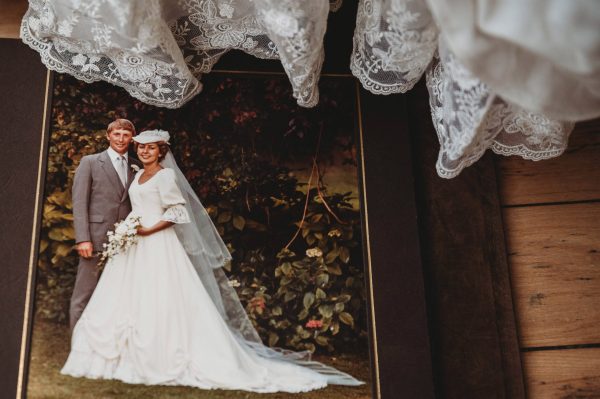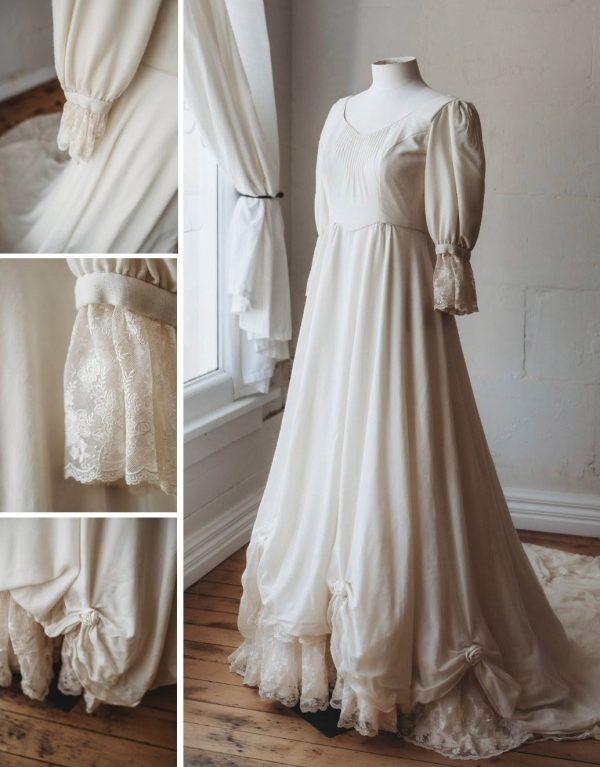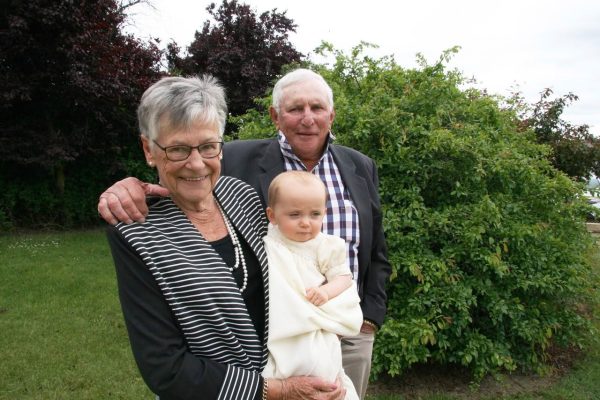Merino Memories
With wool at the forefront of so many in the fashion industry today, we reflect on one of New Zealand’s earliest wool fashion brands and delight in its origins. Words Lucinda Diack, Photos Chloe Lodge.

By nature we are inquisitive – we ask questions, we seek information and are curious about the world around us, and those who have walked before us. For Philippa Cameron, learning and taking inspiration from those who have done it before has become a way of life.
Philippa’s husband Joe is a fifth-generation farmer on Otematata Station in the Waitaki Valley (Otago), where the couple live with their two young daughters. The station is 40,000 hectares with its highest peak at 1,876 metres above sea level. It is a station with plenty of stories to share and memories to marvel at. Some of which Philippa shares on her online platform What’s For Smoko, a visual feast of photos and videos of what she has made that day in her capacity as station cook (which involves feeding up to 9–10 staff during peak times), her vegetable garden and life on the farm. She has also authored two books, including A High Country Life and Winter Warmers which, alongside tried and tested hearty recipes, provide an insight into the history and personalities of those who have worked and lived on the station.
It was during one of her moments of enquiry that she found herself delighting in a new story of station life, and one that provides many connections to the circular fashion priorities of today – the turning of a bale of merino wool into a bridal gown.
‘Often if I have a spare moment or two I like to browse the website Papers Past,’ explains Philippa. ‘I love popping in a name and seeing what comes up and learning something new. One day I modified my search and put in Joe’s mum’s family farm name. Up popped an article about a wedding in January 1984.’

The wedding was that of Joe’s parents, Amanda (Mandy) and Hugh. ‘The article was entitled Finest bale of merino wool put aside for gown,’ explains Philippa. The article describes how the father of the bride, Geoff Bishop, put aside a 120-kilogram bale of his finest wool from the previous shearing to be turned into 360 metres of cloth. Some of which was left off-white for the bridal gown and other lengths dyed cornflower blue for the bridesmaid dresses and dove grey for the mother of the bride, Leone. The wool was super-fine 18 micron merino ewe wool, which was worth $8 per kilogram at the time.
The dresses took up 70 metres and were made by Olga Dreaver, a Christchurch wedding dress maker. ‘Mandy chose the design of her dress from an American magazine,’ says Leone, ‘and Olga made it. It was discussed at the time how nice it was for her to be working with a natural fibre rather than synthetic materials.’
‘While I knew that Mandy’s wedding dress had been made from wool,’ continues Philippa, ‘what I didn’t know was that it led to Leone and Geoff starting a merino fashion brand, which back then would have been hugely forward thinking.’
While Leone and Geoff Bishop are humble about exactly how ahead of their time they were, with Leone laughing herself off as being ‘just an old cocky’s wife’, there is a sense of pride in their voice as they reflect on their journey.
Following on from The Press article about the wedding dress in January 1984, Leone and Geoff were inundated with requests for the fabric they had spun and woven for the wedding.
‘We understood why,’ says Leone. ‘I recall going to a fashion parade of Italian designers using wool and not being able to buy the items here. So together with another couple we decided to do something about it.’
As a merino stud farmer, Geoff in particular relished the opportunity to do something that showcased his product in such an elevated way. Described in The Press in April 1985 as ‘an ambitious venture to produce fashion wool garments from the hoof to the back’, the super-fine merino wool produced on the couple’s farm, Mount Otekaieke Station and that of their business partners, was scoured, combed and spun into wool tops in New Zealand. The tops were then sent to Britain to be spun and woven into high-quality woollen fabric before being brought back into the country to be made into garments. There were no local facilities that would allow the process to be completed here.
The father of the bride, Geoff Bishop, put aside a 120-kilogram bale of his finest wool from the previous shearing to be turned into 360 metres of cloth. Some of which was left off-white for the bridal gown and other lengths dyed cornflower blue for the bridesmaid dresses and dove grey for the mother of the bride, Leone.
‘We worked with a fabulous designer from Wellington to create our ranges,’ reflects Leone, and under the company name Suprino Wool Fashions they were in business for nearly five years, celebrating the natural benefits and durability of woollen textiles.
‘During that time, they employed over eight staff in Ōamaru,’ enthuses Philippa, ‘where they had a small factory from which they produced all of the garments.’
Suprino Wool Fashions were sold across the country, with Leone spending much of her time travelling around New Zealand selling the ranges. ‘Aside from Ōamaru we had stockists in all the major centres and selected country outlets,’ continues Leone. ‘It all sold so well. We had everything a woman could want – dresses, tops, skirts …’
While I get the sense that it wasn’t always easy and that the closure of the business was a difficult decision, the duo are still passionate about the natural benefits of wool and its role in the fashion industry. ‘I was so devastated when we moved recently and a rat got into my last case of merino clothing from Suprino,’ shares Leone. ‘Now all I have left is newspaper cuttings and memories.’ While Philippa has used her vast online platform to put a call out to any Kiwis still wearing, or in ownership of this beautiful fashion range, it was to little avail.
‘I loved farming merinos,’ concludes Geoff. ‘I ran them for years and got record prices for the wool at the time; to have shared what we produced on farm with others, even for a short time, was fantastic.’

For Philippa, the discovery in the article didn’t end with Joe’s grandparents’ foray into fashion. ‘There was a brief mention in the article that Hugh (Joe’s dad) was gifted “a merino ram to start his own stud flock” as a wedding present,’ she shares. A stud flock that flourished under Hugh and Mandy and is still managed by Hugh.
‘To think that was the origin of what we have today is really special. Reflecting on it I wish I had thought of using wool to make my own wedding dress, but perhaps that is something we can do for our girls instead.’
As the fashion industry in Aotearoa and further afield strives for a more sustainable and circular economy, Philippa is contemplative about what we can learn from early adaptors and entrepreneurs, like that of Geoff and Leone. ‘They saw the benefits and success of these natural, speciality fabrics long before our generation did. It is really exciting to see it come full circle now with the rise in popularity of the woollen fashion industry again in New Zealand. There is so much we can learn from history.’

